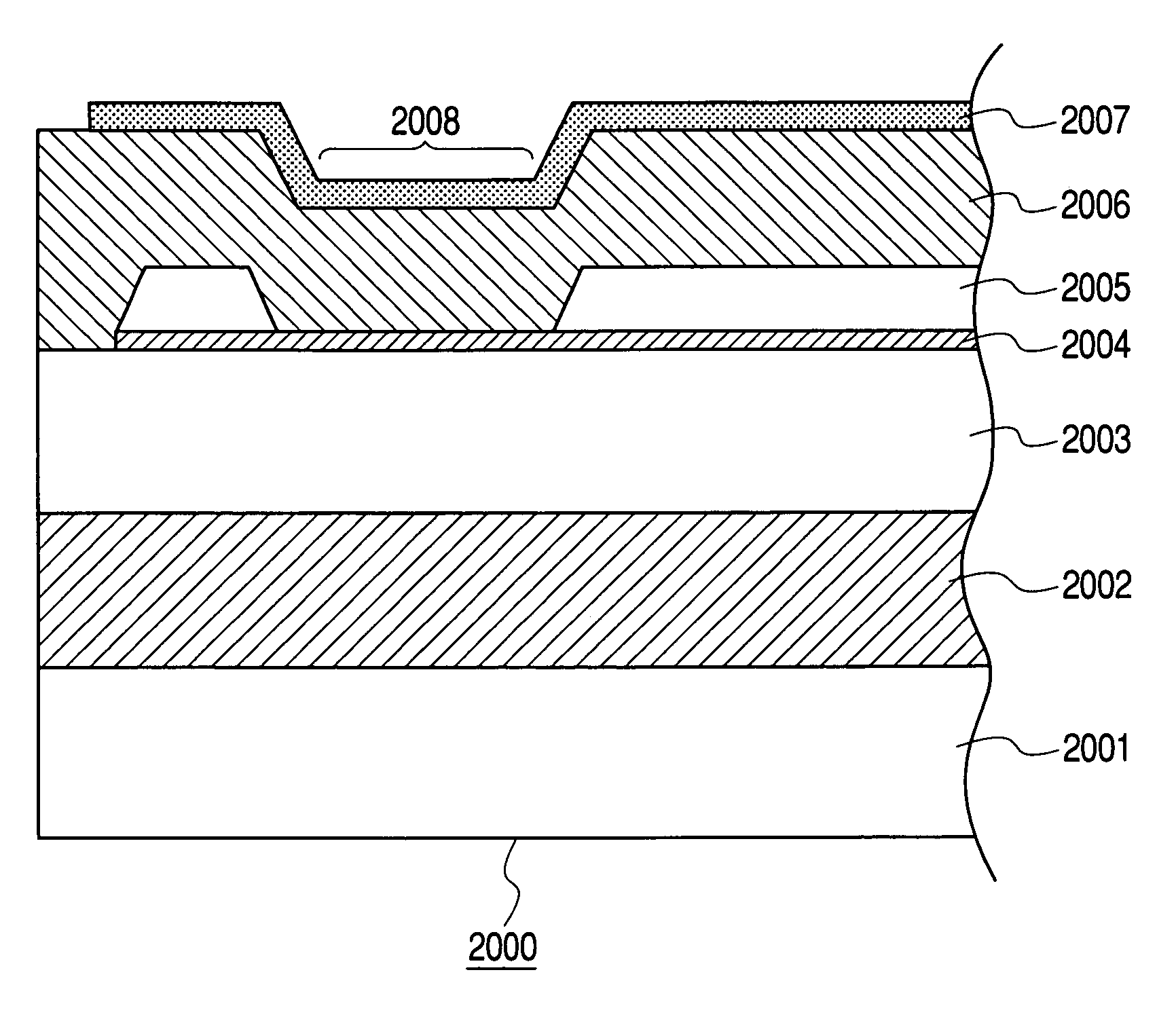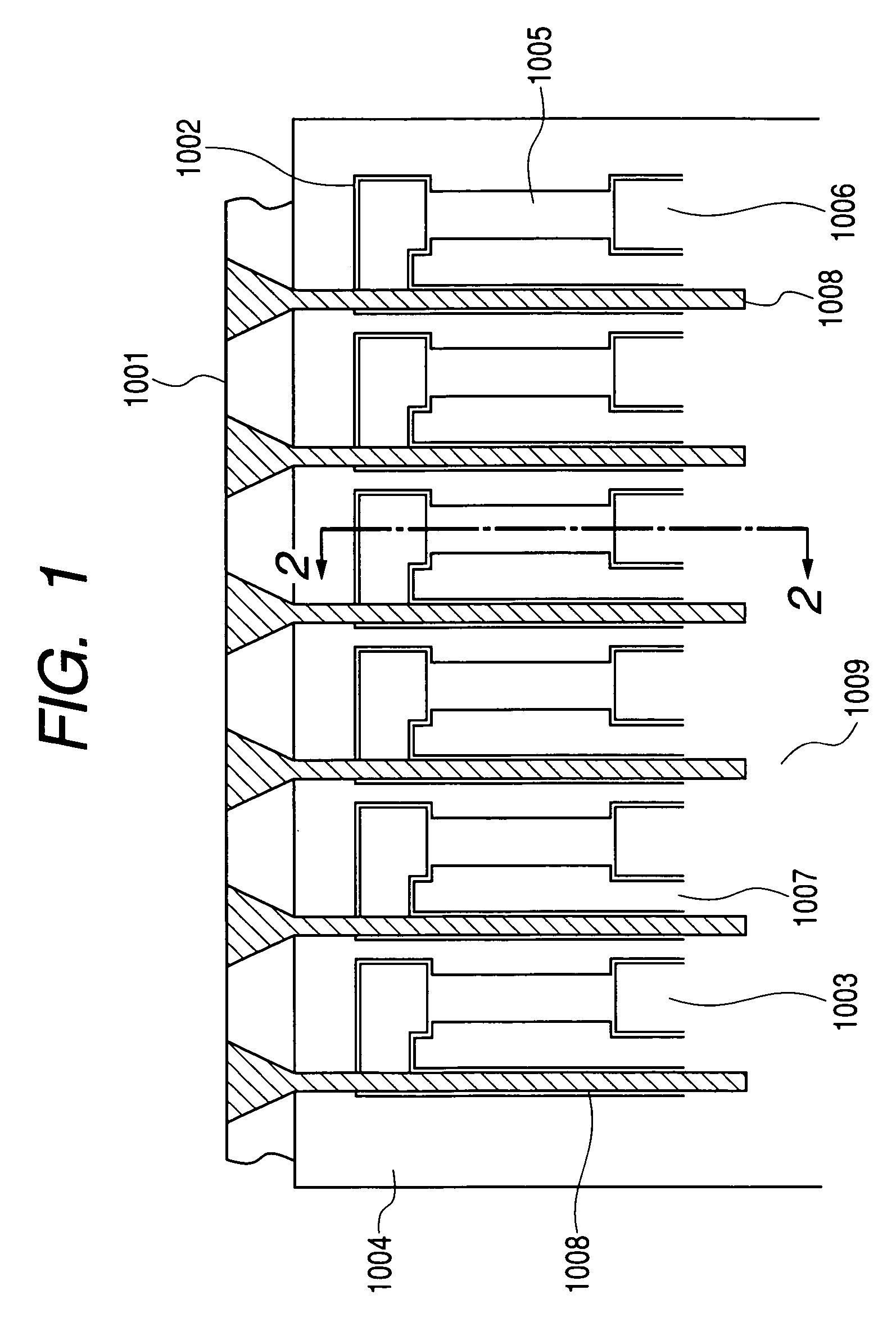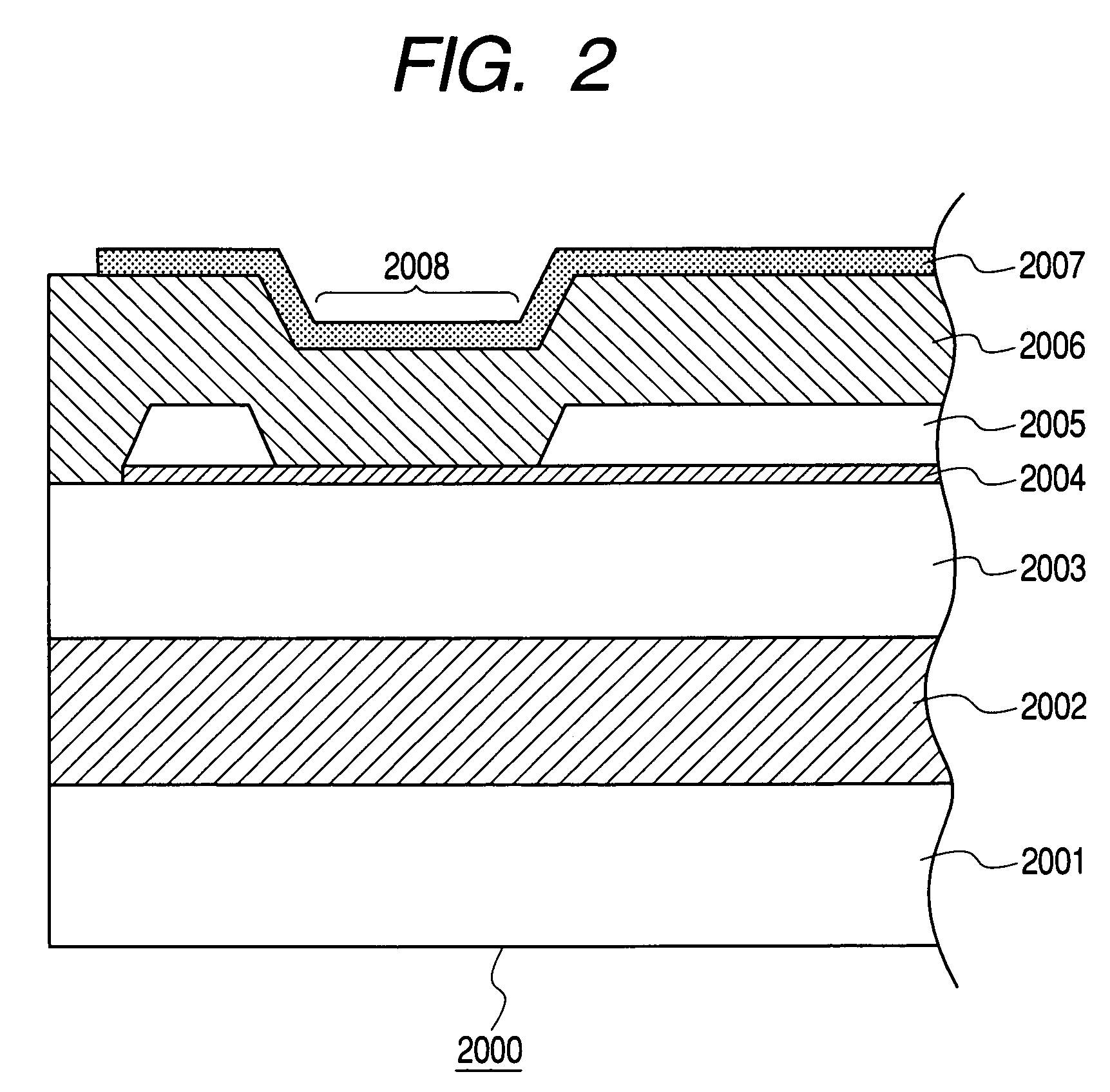Heat generating resistant element film, substrate for ink jet head utilizing the same, ink jet head and ink jet apparatus
a technology of resistance element and thermal print head, which is applied in the direction of printing, etc., can solve the problems of trouble, serious ink discharge problem, heat generation resistance element employed in thermal print head, etc., and achieve stable ink discharge and high quality
- Summary
- Abstract
- Description
- Claims
- Application Information
AI Technical Summary
Benefits of technology
Problems solved by technology
Method used
Image
Examples
examples
[0102]In the following embodiments of the present invention will be explained by examples. However, the present invention is not limited to examples to be explained in the following, but is applicable to a resistor film to be utilized for other application as long as the objects of the present invention can be attained.
experiment 1
[0103](Evaluation of Production Stability of Film)
[0104]An evaluation was made on the production stability of a CrSiN film. Film formations were conducted by varying a nitrogen partial pressure under main sputtering conditions with a target composition of Cr30Si70 (at. %), a power of 350 W and a gas pressure of 0.5 Pa, and there was determined a relationship between the nitrogen partial pressure and the specific resistivity (as to the sputtering apparatus, reference is to be made to FIG. 4). Results are shown in FIG. 6. As will be apparent from the chart, the specific resistivity is approximately proportional with the nitrogen partial pressure up to 0.15% (specific resistivity: up to about 1,700 μΩcm, and increases monotonously to a nitrogen partial pressure up to about 20%. Such relationship shows an increased margin in the variation of the nitrogen partial pressure for the specific resistivity, and indicates that the material is very excellent in terms of stability in a mass produ...
example 1
[0107](Preparation of Substrate of Configuration Shown in FIG. 2)
[0108]At first, on a silicon substrate 2001, a heat accumulation layer 2002 of a thickness of 1.8 μm was formed by thermal oxidation, and an SiO2 film, as an interlayer film 2003 serving also as a heat accumulation layer, was formed with a thickness of 1.2 μm by plasma CVD. Then, with the apparatus shown in FIG. 4, a CrSiN film was formed with a thickness of 400 Å as a heat generating resistant element layer 2004.
[0109]This operation was executed with gas flow rates of Ar gas: 64 sccm, and N2 gas: 20 sccm, a power of 350 W charged to the target Cr30Si70, an atmospheric temperature of 200° C. and a substrate temperature of 200° C. Also as a metal wiring 2005 for heating the heat generating resistant element layer 2004 in the heat action surface 2008, an Al—Cu film was formed by sputtering with a thickness of 5,500 Å.
[0110]It was then patterned by a photolithographic process to form a heat action surface 2008 of 15×40 μm...
PUM
 Login to View More
Login to View More Abstract
Description
Claims
Application Information
 Login to View More
Login to View More - R&D
- Intellectual Property
- Life Sciences
- Materials
- Tech Scout
- Unparalleled Data Quality
- Higher Quality Content
- 60% Fewer Hallucinations
Browse by: Latest US Patents, China's latest patents, Technical Efficacy Thesaurus, Application Domain, Technology Topic, Popular Technical Reports.
© 2025 PatSnap. All rights reserved.Legal|Privacy policy|Modern Slavery Act Transparency Statement|Sitemap|About US| Contact US: help@patsnap.com



